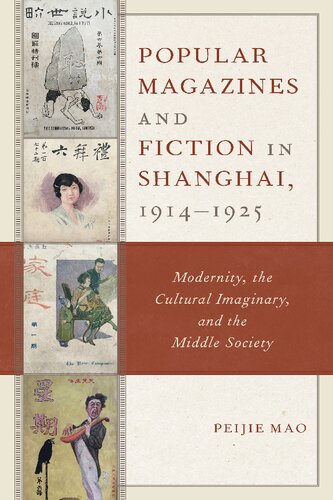

Most ebook files are in PDF format, so you can easily read them using various software such as Foxit Reader or directly on the Google Chrome browser.
Some ebook files are released by publishers in other formats such as .awz, .mobi, .epub, .fb2, etc. You may need to install specific software to read these formats on mobile/PC, such as Calibre.
Please read the tutorial at this link: https://ebookbell.com/faq
We offer FREE conversion to the popular formats you request; however, this may take some time. Therefore, right after payment, please email us, and we will try to provide the service as quickly as possible.
For some exceptional file formats or broken links (if any), please refrain from opening any disputes. Instead, email us first, and we will try to assist within a maximum of 6 hours.
EbookBell Team

5.0
110 reviewsThis book explores the rise of Shanghai-based popular magazines produced by the “Mandarin Ducks and Butterflies School” in early twentieth-century China. It examines the national, gender, family, and social imaginaries constructed and negotiated through a complex network of relationships between popular writers, magazine editors, and their intended readers, which were represented in various forms of popular narratives, including patriotic stories, war/military stories, family narratives, domestic fiction, utopian writings, and industrial-business stories. The author argues that the national imagination, social ideals, and the notions of ideal womanhood and the new family, were intrinsically linked and integral to the search for cultural identity of the emerging Chinese “middle society” and an expression of their collective sensibilities, experiences, and aspirations. This book suggests that the cultural imaginaries configurated in these magazine stories articulated a shared quest for modernity, one that emphasized sentiment, quotidian experience, the pursuit of the modern family and individual success, strengthening of the nation, and the reinvention of cultural tradition. Popular magazines and fiction, therefore, became uniquely instrumental in catalyzing the process of Chinese modernity, which emerged and developed along the symbiotic interrelations between the private and the public, the traditional and the modern, and the real and the imaginary.